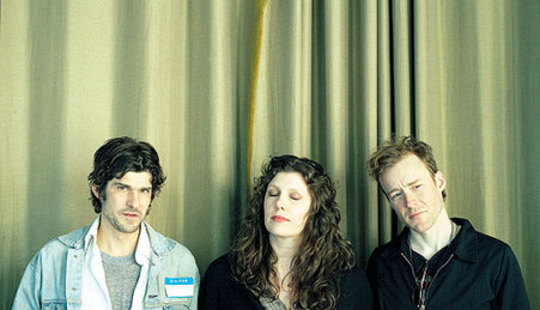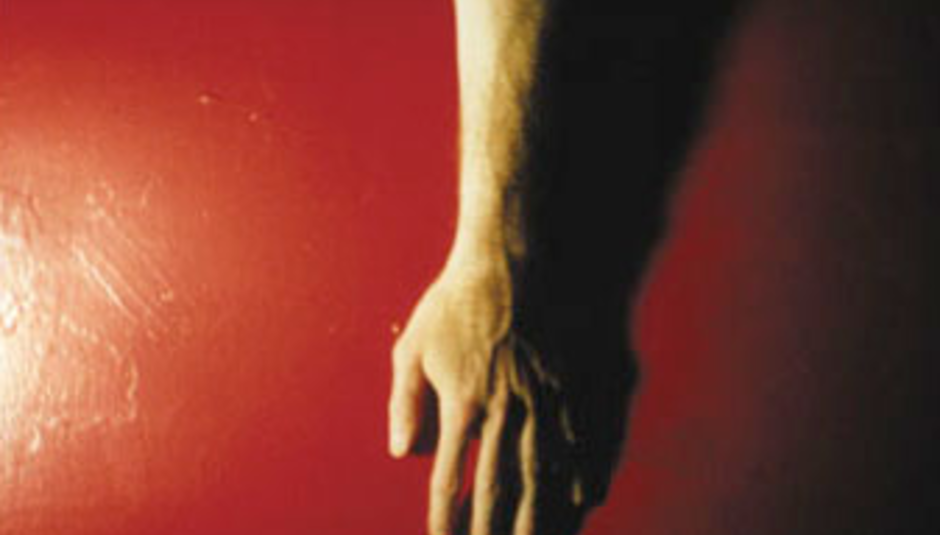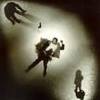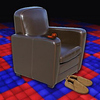In an early interview, from 1996, Alan Sparhawk joked that Low originated from an idea to make the slowest, most depressing music possible (“…and then I thought “Cool!”). He’s since conceded that Mimi Parker – his childhood friend, and wife – represents the spirit of Low (presumably on account of her forlorn voice; minimal percussion; and occasionally brutal lyrics). Other ingredients of the Low sound might be: an emphasis on solemnity and spaciousness as a locus for contemplation (characteristics of religious music, but not necessarily Mormonism); dub reggae (the bass heavy music of dread); and the minimal production values and economic songwriting that never impeded Bob Dylan, also of Duluth, Minnesota. Nonetheless, we can take Sparhawk at his word that he had a healthy disregard for fashion, from the outset (i.e. in the wake of Grunge, and the dawn of Rave Culture), and this has governed most decisions since.
As most readers should know, the basic template for a Low-song is Rock stripped down to its essential components: as few grace notes as possible for the instruments and voices alike. The drumkit literally stripped down to floor-tom, snare, and ride cymbal; rarely deviating from a 4/4 beat. Over the years, various musical influences have manifested (from Joy Division and The Cure – pre-1996 – to The Beatles and The Beach Boys, post-2000), but all have been pared down by removing unnecessary genre signifiers, instrumentation, and effects. With The Velvet Underground, John Cale always intended to play the simplest drone that would fit with Reed’s melodies, and as such The Velvets could be seen as the biggest influence Low ever had. Low’s fellow travellers might include Codeine, Bedhead, and Ida, but none took the formula as far.
Taking a look at the roster of bands Low have covered, there seems to be no pattern other than that anything’s fair game, whether shamelessly Populist and Mersh, or uncompromisingly difficult. The same goes for tourmates, collaborators, and bands who profess admiration for Low (or an influence). Low have covered Jandek (“Carnival Queen”), John Denver (“Back Home Again”); Soul Coughing (“Blue Eyed Devil”); Wire (“Heartbeat”); The BeeGees (“I Started a Joke”); and The Beatles (“Long Long Long”), whom they sound most like on Things We Lost in the Fire (2000). In a rare instance of audience hostility, Low were heckled and bottled in Manchester for their cover of ‘Last Night I Dreamt that Somebody Loved Me’ by The Smiths… although this might be owing more to the sacred status of The Smiths for the home-crowd, rather than the quality of the cover, which remains one of the best and most respectful.
Early on, Low supported industrial / hardcore / proto-post-rock band Swans; dueted on a live version of ‘Do You Know How to Waltz?’ with Godspeed You Black Emperor!; and were described by Mogwai’s Stuart Braithwaite as the one band in the world he’d never dare support. Circa 1996, when they began receiving regular coverage in the NME and Melody Maker, Low baffled journalists who made pointless (but repeated) references to their incongruity when everyone else was ‘Sorted for E’s and Whizz’. In Low, however, contradictions dissolve, and oppositions (between populist and underground) are meaningless: good songwriting is good songwriting is good songwriting.

I Could Live in Hope (1994)
Words, Fear, Cut, Slide, Lazy, Lullaby, Sea, Down, Drag, Rope, Sunshine. Much as its track listing resembled a Cure set-list – and the production followed suit –Low’s debut, I Could Live in Hope (1993) banished histrionics and bombast, without surrendering any of the energy and tension. (Bear in mind, those of you who aren’t exactly fanatical about The Cure, Low’s debut sounds most like Faith, the 1981 album Smith & co. released only months after Joy Division’s Closer, and has a real sense of mourning, rather than adolescent indulgence.)
Everything here is pared down, as if the record is some Pythagorean / Neo-Platonist attempt to attain absolute forms of music, accompanied by archetypal images. It’s more likely that the album’s closing track – a slowed down but essentially sincere / un-ironic cover of “You Are My Sunshine” – was intended to do little more than lighten the mood, but taken together with the album title (I Could Live in Hope) the sequencing does also seem to point towards a tacit narrative arc: coming through a dark night of the soul, to dawn. It’s less likely to be conscious, but the transition from “Words” to “Sunshine” also suggests a conceptual movement – from the abstract and discursive, to the concrete, immanent, real – that mirrors the band’s stylistic departure from contemporary hardcore. A movement from the perpetual frustration of attempting to communicate verbally, and yet (paradoxically) always being apart, to accepting or acknowledging oneness with all things (symbolized in Gnosticism by illumination, being bathed in the light of the sun; comfortingly surrounded, and yet untouched by anything tangible).
In 2008, Low still reject the “slowcore” tag, but embrace any description that involves minimalism, which makes perfect sense. Formally, Low bring the listener to this ontological minimum – this oneness with the pulse and hum of matter – by minimizing extraneous signifiers (be it unnecessary notes, or effects that might connote a mood instantly without requiring the band to generate it). Of course, the album isn’t a philosophical treatise, nor is it a religious tract. It’s a set of carefully chosen images, sung out in notes held (sometimes) over several bars, the whole effect being to impress those images on the listener’s consciousness, allowing us to savour them in a way we’re disinclined to think possible (or worse: in a way we no longer consider interesting and relevant) in modern life; by contrast with the deluge of data, references, allusions, fragments found in contemporaneous evocations of accelerated urban culture (compare Pavement, Sonic Youth, and U2 in 1993).
(8/10)
Long Division (1995)
The album title could almost be a pun on the notion that Low are a slowed-down Joy Division, but “math” has come to have a particular resonance in Sparhawk’s lyrics. With the opening track of their second album, Low instantly show they’ve turned down the reverb enough to dispel comparisons to The Cure. ‘Violence’ is pretty, and sparse, with brushed cymbals and one-beat-in-the-bar floor-tom high in the mix, the guitars gliding slowly from background to foreground; Mimi coming in only on the one-word title, in the chorus. This, arguably, is the definitive Low sound, making Long Division the album with the closest adherence to said-sound, years before the band would put various pop sub-genres through “the Low treatment”, to broaden their palette. Not that it’s a personal favourite album (or many people’s), but second song ‘Below & Above’ could be the definitive Mimi-song, and certainly showcases one of her best vocals, the micro-tremolo on the last lines like a bell ringing, or the aura of the sun during an eclipse.
The first side is subdued, elegant, nocturnal, but not the most captivating Low have ever been, or would be: ‘Shame’ (Track 3) is a little too accurately titled – the music itself is shy, and there aren’t enough moments on the album as a whole like Alan’s snarl on ‘Alone’ (Track 9) where his loser-persona sings “you remind me I’m weak” – the delivery of that last word like the moment it occurs to a scorned man he's still got size and anger on his side. Still, ‘Stay’ (Track 11) shows Alan can perform as an equally tender, and seductive crooner. Opening Side 2, urgency resumes with ‘See-Through’, and real menace creeps beneath ‘Turn’ from the very first note, which repeats the arrangement and mixing of ‘Violence’ (Track 1), but replaces the gentle tom-beat with a more solid thump, whilst the low-mixed guitar and bass adhere tightly to the beat; frighteningly purposive. Closer in mood to the songs on I Could Live in Hope, ‘Turn’ introduces what would become one of Alan’s creepier voices, ever-so-slightly processed and inhuman, to hint at the warped logic of the vengeful, or perhaps even the dead. The minimal lyrics “I never thought you took me…… seriously” suggests a scorned friend or lover turned stalker, but the single phrase “I thought you saw me on the roof” paired with “I never thought you’d be the one…… to turn me in” suggests a different narrative – the loser turned criminal, turned in by a friend turned informant – or perhaps the Biblical narrative of David betraying one of his officers by sending him to the frontline, having seen his wife Bathsheba bathing on the roof (if you don’t remember this from The Old Testament, you should know it from Leonard Cohen, and Sparhawk surely knows both).
Approaching some kind of emotional, or conceptual purity / clarity doesn’t quite account for Low’s musical style. By comparison with the debut, the less-loaded words in the titles (‘Turn’, ‘Stay’, ‘Take’ instead of ‘Fear’, etc.) allow listeners to see more clearly something that was already there: the song as micro-narrative, in which the absence of details foregrounds the loneliness of individual experience, or the simple fact that most of life (including the epiphanies) happens between the moments of high drama. Epitomizing the minimalist strain on the album is the exquisite ‘Streetlight’ – clocking in at under a minute:
And you can see her
Before it cracks and goes out
She throws rocks at streetlights
Keeps the streetlight-changer busy
(7/10)
The Curtain Hits the Cast (1996) ‘Songs for a Dead Pilot’ EP (1996) One More Reason to Forget, LIVE in Kentucky (1997)
With their third album, Low seemed to have shifted towards the expansiveness of post-rock; longer, darker tracks, sometimes with a gradually-climbing upward-dynamic, rather than the horizontal swirl or slow trudge of earlier material; plus, there was a 19-minute dirge of billowing, processed guitar-noise, juxtaposed with a precious, lullaby-like 30-second closer. A year before Mogwai Young Team, and two years before GYBE!’s F#A#+oo, this could hardly be called fashionable – the nascent “post-rock” genre had yet to cohere into the multiple-guitar-led instrumental music that now characterizes it. In 1996, the term “post-rock” was still an intuition (on the part of British music-writer Simon Reynolds) that bands might embrace the varied structures, and emphasis on manipulated sounds, of contemporaneous electronic musicians. Actually, “rockism” had been a swear-word in the early-80s, too, after Neo-Nazi skinheads co-opted the dumbest form of punk, and many others turned to global influences (as well as less phallic keyboards), so dub-aficionados Low inadvertently fit Reynolds’ narrative of historic recurrence quite well, albeit that they were nowhere in his roster.
Initially, the 1996 album departs little from the style or content of its predecessor – the darker songs might provide the basic template (e.g. ‘Turn’), but there are lighter numbers between them: one cryptic phrase from ‘The Plan’ has been gliding through my mind for years like a mantra (“on the step / you han-ded me / pie-ces of the plan / can I ho---ld it / for----a week / for a----week”), which is sung by Mimi with all the compassion of someone asking to hold a baby. More beautiful yet – arguably, Low’s contender for Greatest Song Ever Written is ‘Over the Ocean’, which opens with delicate, sweeping harmonies, before a gently undulating bassline, lapping at some peaceful shore. The lyrics corroborate what you’re already imagining: this is a god’s-eye-view, and although it’s superficial to say that it evokes the pathos of air-travel (well-known to a touring band far from home), the mystery of the song might reside in its borrowing from Mormon doctrine, wherein the New World is prophesied as the locus of new revelations. Alan’s lyrics have an appropriate sense of perspective: “Over the hills / over the dells / over the farmland…” – never pretending to see people, as in a dream, or surreal conceit – but he slips in some abstraction “…over the empire”, which explodes the possible connotations of the song: this is the view of someone, or some being, for whom empires come and go; an enlightened mind, or a god, what’s the difference?
Within a few tracks, the adherence to the darker mood becomes oppressive. Subdued though it sounds, ‘Mom says’ is narrated by a murdered child (or two: their spirits’ identities erased, or elided-together by death). In fact, the music suggests a drowned child, which is literally true, because it’s inspired by a local woman who murdered her children. “Mom says... / we ruined her body” could just be Alan’s interpolation, but it’s powerful for being sung with the incomprehension of a child being hurt by the object of their unconditional devotion… and for focusing on the inverted logic of a killer (but, hey, isn’t every mother a slave to a parasite who murders her individuality…?). The song recalls Duluth native Bob Dylan saying that he and his fellow folksingers literally went down to the library to get material for their songs, writing murder ballads out of some intuition that’s that what you did: you acted as a news-service for the people.
After that, the tracks lengthen, and darken (‘Lust’ and ‘Laugh’ continuing the typology of fearful, shameful emotions mapped since the first record); the imagery becomes more and more cryptic, until ‘Stars Gone Out’, which may sound like a respite for grace and delicacy (musically), but (lyrically) could be the most ominous yet. Arguably, ‘Same’ doesn’t add much, and if the record were to be trimmed, I’d nominate this one for the cutting-floor, but the penultimate track ‘D’you know how to waltz?’ is a post-rock masterpiece that has yet to be bettered, and – like the signature styles of Mark Rothko or Francis Bacon – defies imitation by most serious artists for being too good, and hence too obvious were it to be imitated. Only Sonic Youth’s ‘The Diamond Sea’ or liars’ ‘This Dust Makes Mud’ are comparable, each opening with a legitimate “song” themed around loneliness, before rhythm and melody collapse into oceanic turmoil.
(9/10)
The 1996 album was rapidly followed by the ‘Songs for a Dead Pilot’ EP (1996), and a live-album, One More Reason to Forget, LIVE IN KENTUCKY (1997), which featured a rare performance of ‘Do you know how to waltz?’ (there’s another version, floating about in cyberspace, with Godspeed You Black Emperor! backing, but the studio-album version remains definitive). Neither release can be called essential, but the EP represents Low at their most extreme – stretching the structure of their songs (and the patience of the listener) to breaking point. Most interesting, perhaps, is an early version of ‘Will the Night’, heavily distorted, as if ringing through the pipes of a disused factory, in whose basement the singer has been imprisoned. According to the couple, it’s the first love song Alan ever wrote his wife, and “it only took ten years” (says a slightly peeved Mimi), which may explain why its first appearance on record is utterly unintelligible, so much as to retain the deep privacy and reticence of the singer.
Secret Name (1998)
After the (slowed-down) Cure-album, the (slowed-down) Joy Division album, and the (inventing) post-rock album, Low brought synths and strings to the fore on a collection of their most delicate songs to date, and one with the most lead-vocals by Mimi. Titled after an apocryphal concept – that God alone knows our “secret name”, and uses this when we receive our Calling – many of the album’s songs hinted at the intersection of spiritual and romantic devotion; after all, lovers have secret names for one another, and Christianity has always been aware that erotic love is one way to glimpse agapean love, and in turn apprehend a sense of a higher power (the love that is connection to all things, and not just one person). Having been the sound of interiority, intimacy, prayer, and unspeakable regrets, Low’s Minimalism also began to suggest communication with an unborn, or newborn child – hopeful as much as apprehensive, but also calming, careful, and deviating little from a resting heart-rate.
The album opens with ‘I Remember’ – as in, “I remember… graduation / I remember… painted faces”; all sung through a vocal effect, with a tremulous Optigan (synth) part that’s the sonic equivalent of sepia-toning a photograph. Clearer, and cleaner, but no less nostalgic, is ‘Two-Step’ – this album’s ‘Over the Ocean’. “Two-step… around the room / you can… kne----el down / on white” – it’s a diurnal counterpart to the previous album’s ‘Waltz’, a song so spare and economic in its lyrics, and yet perfect in its delivery, that you might simultaneously imagine a married couple dancing in their bedroom (still in love; not just attending a ball because it’s a work-function), or on the other hand… a dream-scene in which the snow has blown in through the window and spread across the room.
Overall, the album adds little to our picture of Low, besides a new texture, and is best understood as a lighter complement to ‘_The Curtain Hits the Cast’. ‘Weight of the Water’ is another drowning song from Mimi, and ‘Home’ & ‘Old Man Song’ both narrate flight in a way that makes it a glimpse through God’s eyes. In any case, there are several songs here that might have you re-drafting your list of Best (Low) Songs Ever.
(8/10)
‘Christmas’ EP (1999)
In many ways, the ‘Christmas’ EP (1999) represents a transitional release for Low. The band had only ever permitted themselves to break with minimalism when the performances were heavily couched in irony – see, for instance, the live hardcore versions among the hidden tracks on the Box-set. Nonetheless, a handful of faster, upbeat songs made sense in the context of the EP, and worked well by contrast with the slowest (‘Long Way Round the Sea’ – with Herod’s mass infanticide in the background – and the strangely sinister ‘One Special Gift’, which brought a sense of sacred mystery to the priceless gift of affection between husband and wife, after all the commercial bullshit of Christmas is over). In a sense, then, Secret Name paved the way for the instrumental variation of later releases, and the ‘Christmas’ EP showed that a change of tempo needn’t mean sacrificing the essence of Low. The “Beatles” album (Things We Lost), the “Beach Boys” album (The Great Destroyer), and the “hip-hop” album (Drums and Guns) could all follow…
(8/10)
Part 2: the Rough Trade years, and the Sub Pop years, tomorrow.























